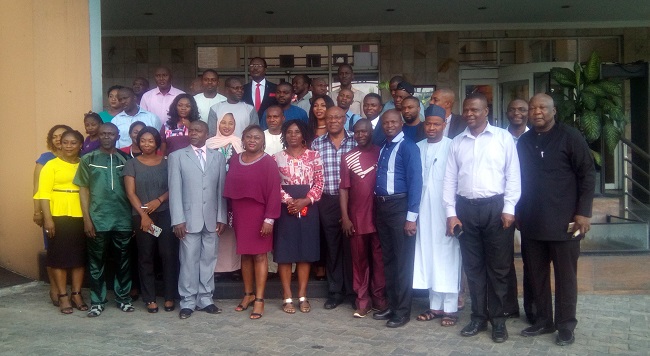Why are debts in the electricity market so high and how can they be resolved through domestic financing using the Power Sector Recovery Programme?
Can the Put-Call Option Agreement (PCOA) be US Dollar denominated against the Naira to allay fears of international lenders?
What is your opinion on the potential solutions advanced by the consultant and/or what other financial mechanisms or instruments, not considered by the consultant that can be deployed to address domestic financing in the sector?
Are Nigerian deposit money banks (DMBs) interested in becoming involved in green infrastructure finance and what, if any, barriers do they face in addition to those listed by the consultant?
Is carbon, linked to the Paris Agreement, a realistic international export product for the Nigerian green investment markets to generate export revenues for the country?

These are some of the posers put before a team of climate and energy sector stakeholders who gathered in Port Harcourt, Rivers State on November 15 to 16, 2018 to validate two draft reports related to a five-year project titled: “De-Risking Renewable Energy NAMA (Nationally Appropriate Mitigation Action) for the Nigerian Power Sector”. The project commenced last year.
The project is being implemented by the United Nations Development Programme (UNDP), in collaboration with the Energy Commission of Nigeria (ECN), the Federal Ministry of Environment, Federal Ministry of Power, Works & Housing and other stakeholders.
The study reports that were put up for validation in Port Harcourt are titled: “Nigerian domestic financial sector reform to unlock low-cost local capital for green investment” and “The development of an MRV mechanism for the Nigerian power sector”.
In the course of the workshop, international consultants (ICs) who prepared the reports were unable to physically attend the forum. They however virtually presented their reports, addressed the gathering and reacted to inquiries.
Delegates, in three groups, addressed the posers and made suggestions and corrections to the reports, which were eventually accepted for validation.
The project has three key components, namely:
- Design and development of a power sector renewable energy NAMA supported by De-risking Renewable Energy Investment (DREI) analysis;
- Developing Policy and Institutional Framework for private investment in on-grid renewable power generation, and
- Demonstration of first commercial on-grid renewable energy project
National project coordinator, Okon Ekpenyong, points out that the overall objective of the project is to assist the government of Nigeria in achieving a transformation in the electricity mix such that at lest 20GW of Nigeria’s electricity is generated by solar PV by 2030. The project, he adds, is expected to contribute to the country’s attainment of its Nationally Determined Contributions (NDCs) mitigation targets in the energy sector, with expected direct emission reductions of 205,700 tons of CO2e during the project’s lifetime and additional indirect emission reduction between 6.79 and 9.72 million tCO2e.
“The project also seeks to investigate and propose the various practicable ways of implementing domestic financial sector reform in order to unlock lower cost financing in Nigeria renewable energy sub-sector. In addition to this, the project is to develop Measurement, Reportable and Verifiable (MRV) framework, with appropriate indicators to measure, report and verify the emission reductions that will be generated by investment in low-carbon activities under the NAMA/NDCs,” adds Ekpenyong, and engineer, who is of the Energy Commission of Nigeria (ECN).
Bothered by the fact that on-grid renewable energy development, with its high initial capital intensity and requirement for loans and log tenures, faces several barriers to accessing finance, the project promoters conducted a study to analyse the breadth of the Nigerian domestic financial sector. The study examined both the various barriers that exist and incentives that can be put in place. It likewise proposed specific policy reforms that are applicable to Nigeria for green infrastructure investment, as well as a road map or action plan for their implementation.
The project is also expected to develop a framework that will establish accurate measurement and accounting of actual green house gas (GHG) emission reduction from mitigation actions in energy generation and end-use sectors. This is based on the premise that, currently, some on-going energy projects do not consider the critical role of an MRV methodology in assessing the contribution of NAMA implementation to the overall national voluntary GHG emission reduction targets.
